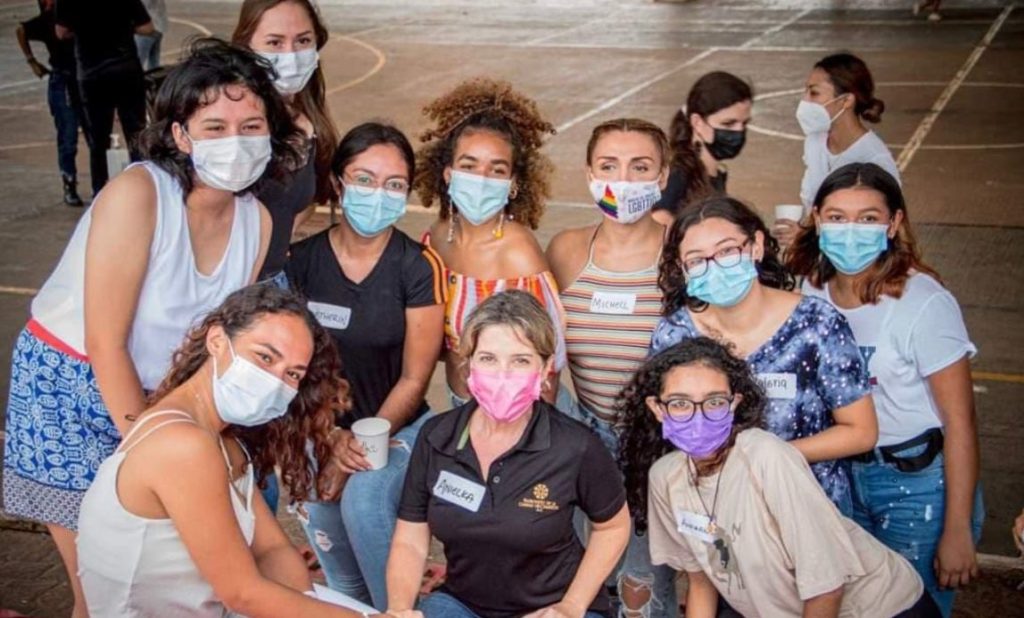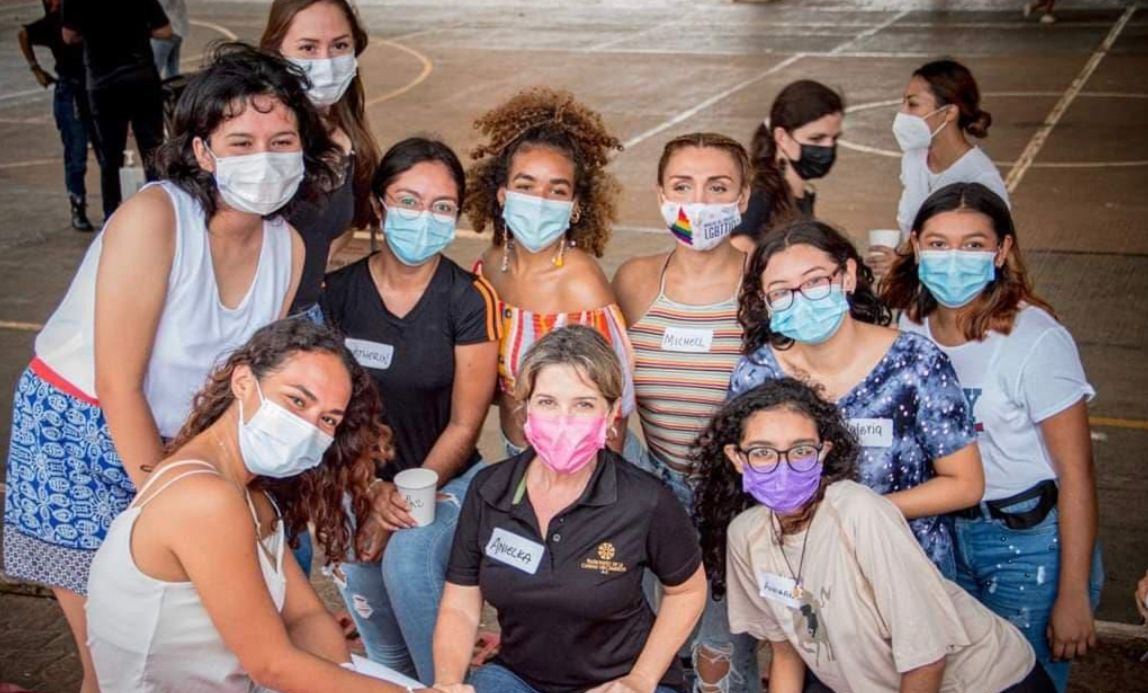Summer of 1995, in the lush highlands of Chiapas, two small boys are fixated on the magic generated by a simple yo-yo. One of the boys has been raised in the surrounding green mountains, the other has not; it is the outsider to which the toy belongs. Both boys are the same height, and yet are separated in age by four years, a fact that the mother of the visitor, sitting in the shade of a nearby tree, observes with melancholic shock.

The woman is Anielka Garcia Villajuana, then making her first visit to Chiapas as a young woman, in the midst of the Zapatista rebellion. At the time, Villajuana was emerging into socio-political consciousness. Now, she sits with many accolades to her name, in her office at Patronato de la Ciudad de Campeche, where she has been President since 2018, although she is just as happy in a public setting on the streets of Campeche, her hometown.

For Villajuana, visiting Chiapas in the nineties – commonly regarded as the “basement” of Mexico in terms of socio-economic statistics – was one of the many seminal moments that led her towards a lifetime endeavor of social causes, among those: advocating for LGBTQ+inclusivity; egalitarian female representation at all levels of civic endeavor; generating democratized urban spaces for all levels of the community.
Of all the projects Villajuana has engaged in, perhaps the most eye-catching has been the Moda Intramuros fashion show. Beginning as your typical runway with hired models and prominent designers, Villajuana realized that the event could also be values-driven alongside its flagship fashion component, and proceeded to shift its focus towards environmental responsibility and inclusivity. In its most recent 2021 show, Villajuana and her team took months to train local youth in catwalking and confidence, in addition to moving the focus to eco-conscious designers. Using an industry that is usually elitist in its approach, Villajuana turned fashion into a productive tool of social inclusion. By creating space for Campeche’s diversity of citizens, many of who were unable to access an exciting space for self-expression prior to this, Villajuana has showcased the potential for one of many inspiring projects. With fashion inclusivity being the first of many steps taken by Villajuana, a runway full of varied representations of sexualities, genders and physicalities are the beginning of a spotlight focusing on those previously marginalized.
Other focuses of the Patronato during Villajuana’s presence have included a shift in the focus of the trams – belonging to the Patronato – which tour round Campeche’s colonial walls. Although they retain a focus on engaging tourists with the beauty of this World Heritage Site, they now also offer alternative histories of the capital where women and indigenous people feature as richly developed main characters. With wide-reaching connections into the community, Villajuana has also partnered with programs such as the Mercado Verde de Campeche, and its sister project, the Empresa Verde (Green Business) scheme, in order to encourage producers and businesses committed to social and environmental responsibility in the city. And it doesn’t stop there: in a drive not to leave economically marginalized families behind, the trams run by the Patronato de la Ciudad also offer free trips for children of families so they too can enjoy and value their heritage.

Villajuana’s idealistic focus is no accident: her position as a woman of positive influence has clearly been informed by her upbringing. Rooted in Campeche, her parents would often travel, leaving her and her six siblings in the care of their two elderly, firebrand aunts. Describing them as frail, grey-haired women, Villajuana laughs at the irony of the stoic personas that contradicted their outward appearance. “These two women were real feminists, for me,” she says, her eyes glinting with pride, and more than a little hint of the inner strength she inherited from these figures.
The origins of her principles of care arise early among what she describes as a “chaotic but loving” family unit. With a blind grandfather at home during her childhood, she speaks of the unspoken family rule: ‘the eldest looks after the youngest – and we all look after Abuelo’s. The accepted responsibility of inter-generational care, as is the norm for many families in Mexico, echoes through now in her ambitions for Patronato de la Ciudad.
The awareness of social justice perspectives and political ideologies Villajuana carries with her now was largely informed by her siblings, the eldest sixteen years above her. They generated an in-depth rhetoric surrounding the Vietnam war, the events of 1968 (including the student killings in Mexico City), and the downfalls of PRI for the open ears of an adolescent Villajuana. She describes her and her siblings as being the first generation emerging from the post-war context, her parents as being the last generation of the old world.

Her priorities for the city she calls home are envisioned in her words, “We need to work for the Campeche we aspire to inhabit. All of us. And that’s not a cliche. It’s necessary. We can’t leave it to state or local governments, it has to be a civic movement; an agreement of the values we want to build our city on quality of life; security; social and environmental responsibility. The fabric of a city is not just in its walls and roads, it is also in its people. Above all, it is in its people.” Since witnessing the corruption of ‘playtime’ in Chiapas, with childhood images replaced by the groan of tanks and automatic weapons, Villajuana has recognized the violent consequences that fractured politics can have. She recognizes this sensitive morality is still ever-relevant in Campeche today, leaving those who are impacted by her projects hopeful for what’s to come.
For Times Media Mexico, Emily Dickinson-Holdcroft in Campeche
San Miguel Times
Newsroom

